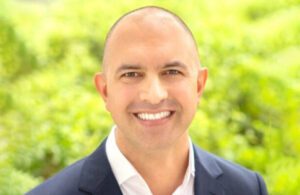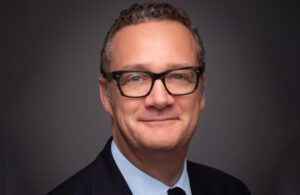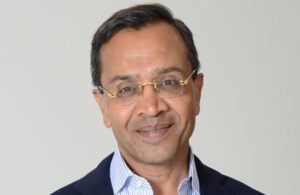
Dr. Farzad Azimpour is SVP of Advanced Technology at Edwards Lifesciences [Photo courtesy of Edwards Lifesciences]
Medical device developers have gotten creative in connecting with surgeons and interventionalists during the pandemic.
Leaders from Abbott, Boston Scientific and Edwards Lifesciences shared some of their experiences, challenges and opportunities with attendees of DeviceTalks West in October.
The chief challenge is the number of physicians, nurses and other medical professionals who have left the field during the pandemic.
“The elephant in the room is that everybody is worried about how we’re going to get things to patients,” said Farzad Azimpour, SVP of Advanced Technology at Edwards Lifesciences. “How do we equip the limited capacity that we have right now — from nursing, physicians, everyone — to enable what we have to actually reach patients in a timely and appropriate manner?”
Dr. Nick West, chief medical officer of Abbott’s vascular business, called the change “irreversible.”

Dr. Nick West is chief medical officer and divisional VP in Abbott’s vascular business [Photo courtesy of Abbott]
“No one’s going to flip a switch, and it’s going to go back to the good old days of how it was. That’s not going to happen,” West said. “What we need to do is continue to engage. There are great signs of engagement with the FDA about rapid approval of devices, about the way that clinical trials can be performed in this setting to continue to generate the data. Because many companies — luckily we weren’t one of them — had big problems in completion of follow-up in continuing their clinical trials during the pandemic. But there are many, many mechanisms by which you can go about addressing that.”
Device developers take advantage of new technology

Dr. Nilesh Patel is VP of Medical Affairs for the Neuromodulation division of Boston Scientific [Photo courtesy of Boston Scientific]
Device makers have kept in touch with medical professionals with remote teaching and training technologies. Other solutions like pre-authorization portals and remote psychological clearance are lifting some of the work from practicing physicians, said Dr. Nilesh Patel, VP of Medical Affairs for the Neuromodulation division of Boston Scientific
“American ingenuity is there,” he said. “If there’s a problem, an unmet need, we’ll figure out ways to meet that need, how to reach these patients, how to manage them efficiently and how to maintain the therapy. And I continue to see innovation in these spaces.”
Access to hospitals remains useful, especially for R&D teams to see devices that have been used, West said.
“But there are ways of doing this virtually. We’ve used both augmented and virtual reality in proctoring, in training people when you can’t go into hospitals,” he said. “There are a variety of other remote monitoring systems around the world that have also been used. Innovation has kept pace with the need. … I don’t feel that the communication now is any worse than it was before.”
Another concern is that the pandemic reduced the number of cases and studies for trainees and researchers. That means device makers must provide tools to help physicians offer the same quality of care as before the pandemic.
“Make it simple,” West said. “Today’s doctors, tomorrow’s doctors may not be as well trained as those five, 10 years ago.”
Device developers get provocative
At Edwards Lifesciences, Azimpour’s team has a way to solicit ideas from physicians in an exercise using fake abstracts.
“We’re just obsessed with articulating and clarifying what is the unmet need. …We put provocations out in front of clinicians, and these provocations are not even a solution — it’s Solution X,” he said.
To find what physicians want, they ask what an ideal study might look like about Solution X. Next, dream of the ideal medical journal that would publish the study.
“Tell me the title, the aim, the methods, exactly what patient population you’re going after and why. Talk about results that are believable, not 100% fixed. And then what are the results? And it’s written in a language that clinicians can understand,” Azimpour said. “You put that in front of a clinician as your provocation, and they look at it, and they say, ‘OK, here’s a red pen. I’m going to rip this up. That’s not the right population to go after,’ or, ‘Yeah, these are reasonable, these are results that I would want to see that would be enough for me to change my practice.’ And if you can achieve this with whatever solution you end up inventing, go ahead. Green light. So that’s how we do it.”
Pay doctors to come to you
“You could do what we did. … Just hire a bunch of physicians” through fellowships, Azimpour said.
Edwards Lifesciences has a structural heart innovation fellowship, with fellows based at the Irvine, California headquarters under Azimpour’s group.
“By bringing in these early career cardiologists and cardiac surgeons on this rotating yearly basis, we get a sense of not only what is that individual’s practice preferences, but we require them also to understand (how) the world practices medicine and why,” Azimpour said. “So at the beginning, you can tell if somebody’s going just say, ‘I do this this way and this is the only way.’ Obviously, that’s not going to be the right type of fit for the fellowship that you run. We expect that someone can rationalize why they do something and why other people do something in a different way. Hopefully, that gives us a good view.”